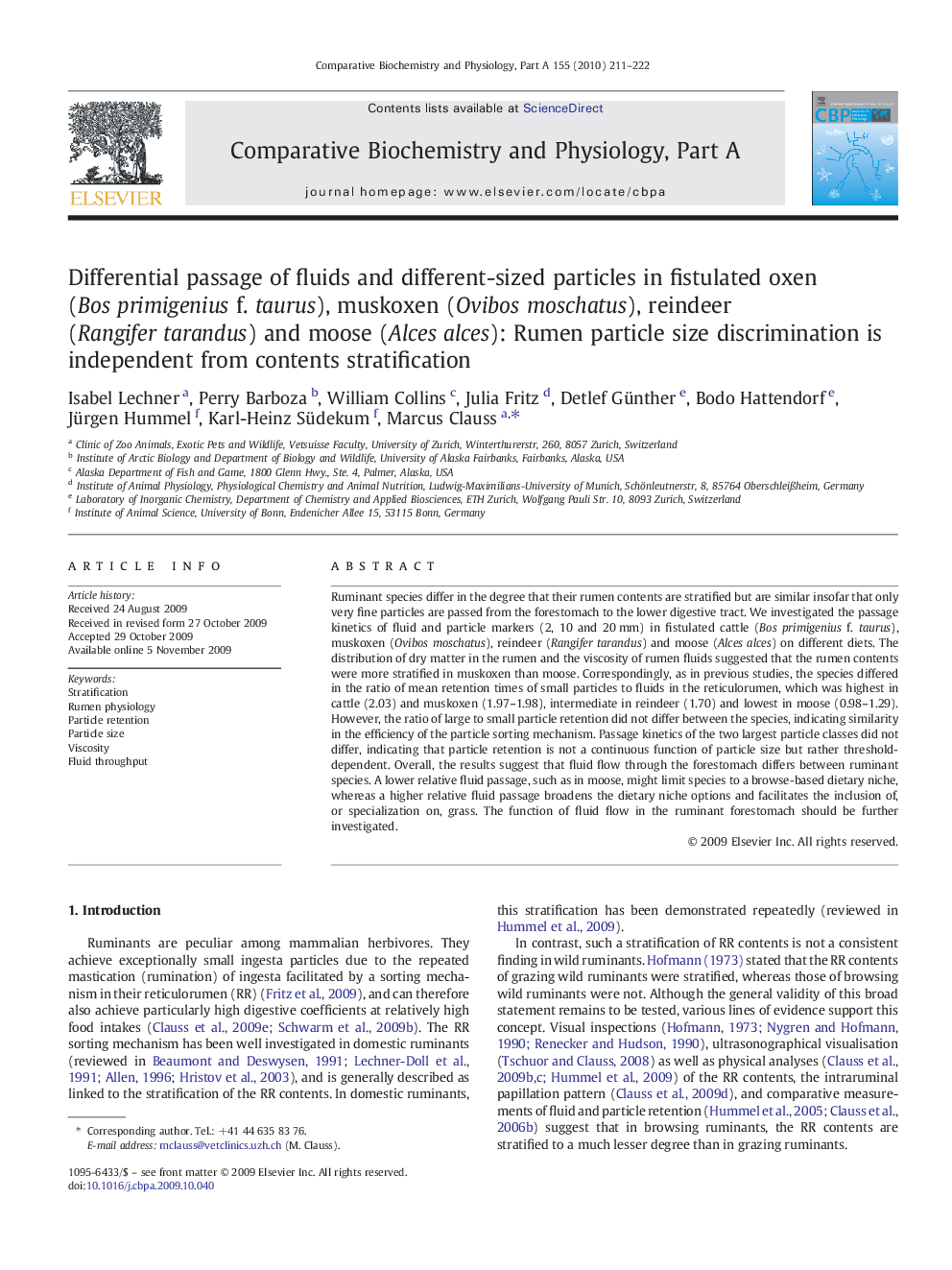| Article ID | Journal | Published Year | Pages | File Type |
|---|---|---|---|---|
| 1974196 | Comparative Biochemistry and Physiology Part A: Molecular & Integrative Physiology | 2010 | 12 Pages |
Abstract
Ruminant species differ in the degree that their rumen contents are stratified but are similar insofar that only very fine particles are passed from the forestomach to the lower digestive tract. We investigated the passage kinetics of fluid and particle markers (2, 10 and 20Â mm) in fistulated cattle (Bos primigenius f. taurus), muskoxen (Ovibos moschatus), reindeer (Rangifer tarandus) and moose (Alces alces) on different diets. The distribution of dry matter in the rumen and the viscosity of rumen fluids suggested that the rumen contents were more stratified in muskoxen than moose. Correspondingly, as in previous studies, the species differed in the ratio of mean retention times of small particles to fluids in the reticulorumen, which was highest in cattle (2.03) and muskoxen (1.97-1.98), intermediate in reindeer (1.70) and lowest in moose (0.98-1.29). However, the ratio of large to small particle retention did not differ between the species, indicating similarity in the efficiency of the particle sorting mechanism. Passage kinetics of the two largest particle classes did not differ, indicating that particle retention is not a continuous function of particle size but rather threshold-dependent. Overall, the results suggest that fluid flow through the forestomach differs between ruminant species. A lower relative fluid passage, such as in moose, might limit species to a browse-based dietary niche, whereas a higher relative fluid passage broadens the dietary niche options and facilitates the inclusion of, or specialization on, grass. The function of fluid flow in the ruminant forestomach should be further investigated.
Related Topics
Life Sciences
Biochemistry, Genetics and Molecular Biology
Biochemistry
Authors
Isabel Lechner, Perry Barboza, William Collins, Julia Fritz, Detlef Günther, Bodo Hattendorf, Jürgen Hummel, Karl-Heinz Südekum, Marcus Clauss,
